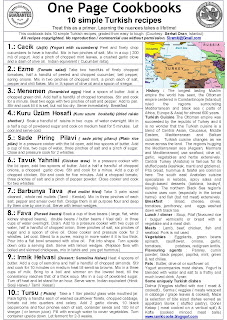
Saagu, a classic Kannadiga curry is a flavoured coconut stew in which vegetables are simmered. It is the closest equivalent to the kuruma of Tamilnadu and Kormas of North India. Saagu is eaten mixed with rice, flatbreads ( poori / chappati), rava idli or set dosa. Saagu can be cooked with any vegetable, but the ones listed here are the most common.
Like any curry cooked with coconut / coconut milk, cooking saagu for long makes it split into solid and liquid portions. The goal is to have a creamy saagu. So cook it on low heat with constant stirring for as short a time as possible. Using boiled vegetables greatly shortens the cooking time and reduces the risk of the saagu curdling.
Naming Saagu : Saagu can take their name from either the base used ( eg: Baadami saagu), from the flavouring used (eg: Masala saagu,) or from the additves used (eg: Batani Saagu). They are also named after the dish it is eaten with ( eg: Rava Idli saagu) or after a region ( eg: Malenadu saagu) or after a combination of all the above (eg: Baadami masala potato saagu).
Saagu has the consistency of a thick, chunky soup. If your saagu is thin, dissolve 2-3 pinches of rice / gram flour in a spoon of water and mix into the simmering saagu to thicken it.:
Though traditionally eaten with rotis or rice, a saagu goes equally well as a sauce with pasta or noodles. Being very mild, it serves an excellent introduction to south Indian cuisine.
The base : Saagus are cooked with a variety of bases , though a blended mixture of coconut, poppy seeds, chilies are found in most saagus. As listed in column 1, a variety of goodies are blended in to create different classes of saagus.
The flavouring : The common south Indian flavouring of fried mustard, curry leaves and asafetida is used in most saagus. Different combinations of common south Indians flavourings are also used as listed in column 2.
Additives used.: Almost all vegetables or a mixture of them are used in saagu. The most common ones are listed in column 3. Most vegetables can be boiled and added to saagu. Vegetables can also be stir fried and then mixed in.
Cooking vegetables beforehand greatly shortens saagu cooking time.
Stir frying : Heat a spoon of oil. Add a handful of chopped vegetables. Sprinkle some water and stir fry for 3 - 5 minutes.
Boiling :Bring a liter of water to a boil. Add a spoon of salt. Add a handful of chopped vegetables. Cook for 5 - 8 minutes. Pour in a colander to drain water.
Microwaving : Add a handful of chopped vegetables to a microwave safe cup. Sprinkle a bit of water. Cover loosely and cook on high for 2 - 4 minutes.
Pressure cooking : Add two handfuls of chopped vegetables to a pressure cooker. Add half a cup of water, Pressure cook on medium heat for 1 whistle.
Easy Saagu powder : Take three pinches of cumin, a clove, a small bit of cinnamon,a pinch of pepercorns, half a handful dry coconut flakes, two dry red chilies, four pinches of poppy seeds, two pinches of rice or roasted gram and two pinches of salt. Blend all to a powder. For instant saagu, just mix the powder with the base, add boiled vegetables, simmer for 5 minutes and serve.
For detailed recipes and great pictures, check out the model recipes from my fellow bloggers.
Roopa’s Rava idli Saagu
Rashmi’s mixed vegetable saagu
Vaani’s vegetable saagu
Nags’ masala saagu
Sushma’s Bombay saagu
Prathiba’s potato saagu







